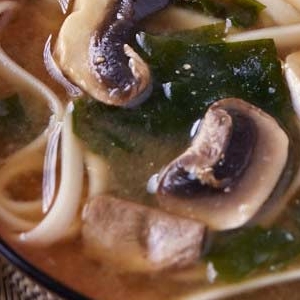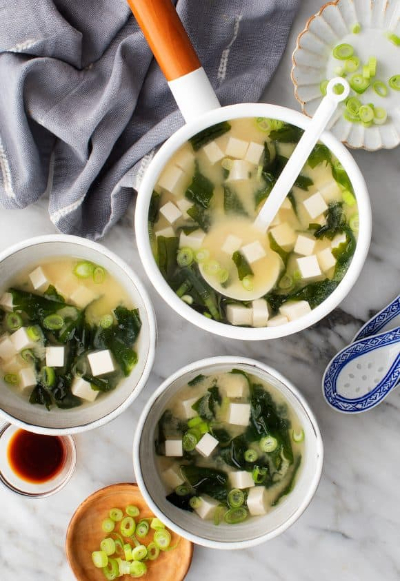Everyone who likes to make Asian food knows and loves Miso. It’s a multi-faceted cooking paste that also provides more than enough salt to suffice in most recipes. And its flavour is uniquely ‘Asian’. But Miso is also a super-healthy fermented product!
How many times have you scanned down the ingredients list for an Asian soup, sauce or other dish and found some variety of Miso close to the top?
A Miso for every season(ing)…
Miso is a fermented soy paste which comes in an array of colours from white, to yellow, to red, to brown; rich flavours from just-detectable nuttiness to pro-nounced umaminess; and a full salt spectrum. It may also contain any or all of: rice, barley, rye, buckwheat or hemp seeds, all of which affect the color and flavor of the final product.
It’s the flavour base of myriad Asian dishes. I usually tell folks who ask, it’s as ubiquitous in Asian cooking as Stock is in Western cooking. And it occupies a parallel place in its native cuisine.
Alas, Miso is often given a bad wrap because of its saltiness. After all, excess salt is one of the big-three evils of processed foods: salt, sugar and fat. However, as we’ll learn presently, Miso’s benefits far outweigh the draw-backs of its sodium content!
A reprieve?
But recently, Miso has been generating lot of interest among healthy-eating advocates and nutrit-ionists. That’s because it’s an ancient and venerable fermented food. All manner of fermented foods have have suddenly enjoyed an elevated profile as nutritional powerhouses.
“Miso is a nutrient-rich, versatile condiment definitely worth keeping on hand,” Healthline.com reports. “The fermentation process used to produce it may be especially beneficial, potentially boosting digestion, aiding the immune system and helping fight disease.”
One oz. / 28.4 g of Miso delivers:
- Calories: 56
- Carbs: 7 grams
- Fat: 2 grams
- Protein: 3 grams
- Sodium: 43% of the RDI
- Manganese: 12% of the RDI
- Vitamin K: 10% of the RDI
- Copper: 6% of the RDI
- Zinc: 5% of the RDI
It also contains smaller amounts of B vitamins, calcium, iron, magnesium, selenium and phosphorus, and is a source of choline.
A probiotic plus…
The most common active fermentation agent in Miso is a fungus called Aspergillus oryzae. Probiotics have been proven to promote, “a healthy gut microbiome [which] can boost your overall immunity, reduce inflammation and help keep your bowels regular.”
A. oryzae is a particularly beneficial probiotic. That may, in fact, be the reason Miso is number 3 on the Cleveland Cinic’s top-6 list of beneficial probiotoc foods!
My take
I was surprised to find Miso described, in one context, as a ‘condiment’. Is there anything it can’t do? Or make better just by being there?
I can heartily recommend this authentic recipe for classic Japanese Miso Soup (see photo, above, left) as a starting place for your own exploration of this amazing Asian ingredient!
Be that as it may… You might want to consider using Miso in place of stock (beef, chicken or veggie) to up the nutritional ante and flavour profile of all sorts of non-Asian dishes. I can tell you from per-sonal experience, you’ll almost certainly be pleasantly surprised by the results!
~ Maggie J.


